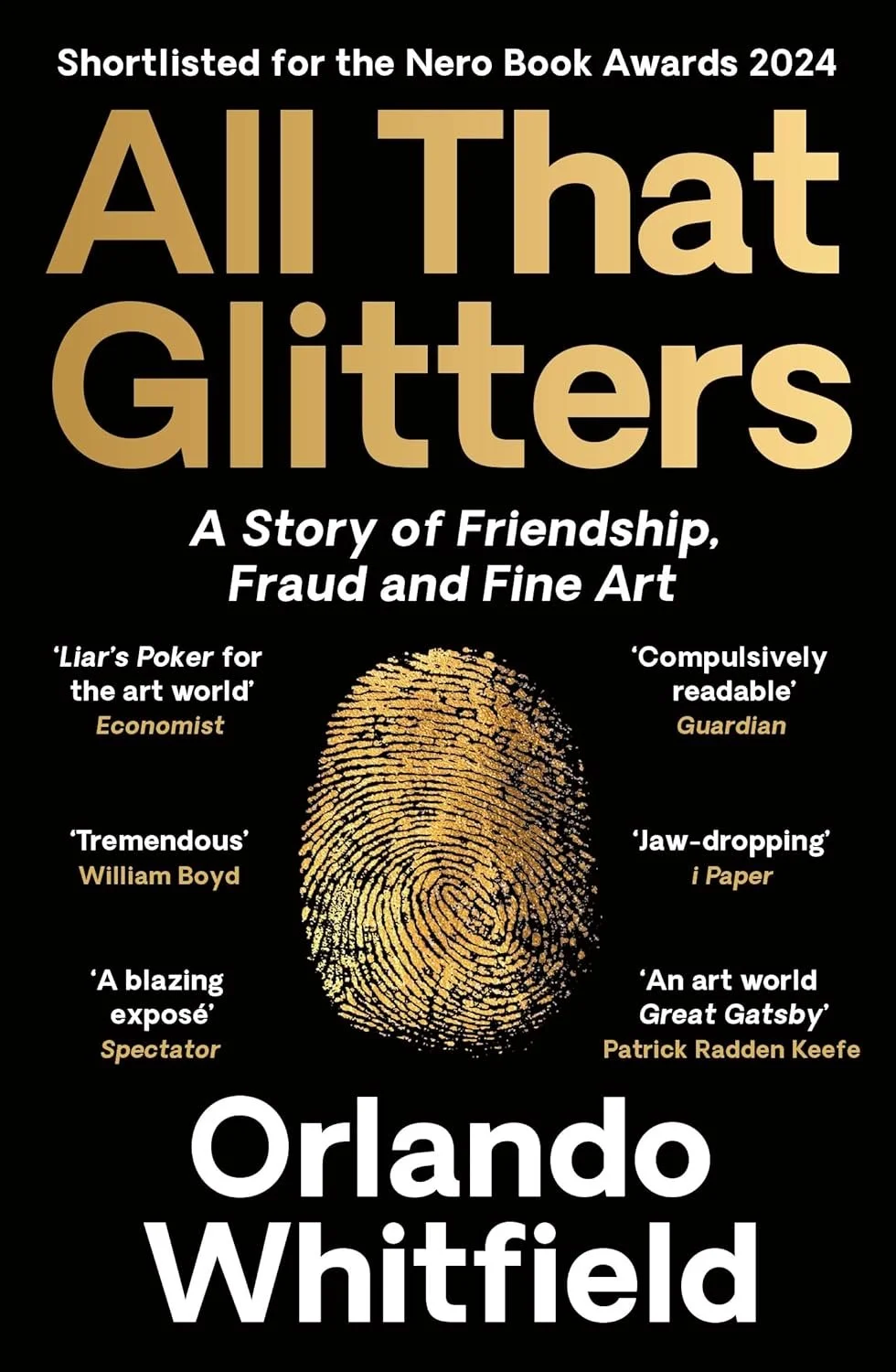
July 2025
An Interview with Orlando Whitfield, author of ALL THAT GLITTERS
Adventures in the Art World
Orlando Whitfield graduated from Goldsmiths University in 2009. He started dealing art while still a student, and worked in and around the art market for fifteen years. His writing has appeared in the Paris Review and the White Review. ALL THAT GLITTERS is his first book.
CHEERIO: Would it be fair to say that All That Glitters is as much a story about intense friendship and subsequent disillusionment as it is about the art world?
OW: Yes, absolutely. I think the phrase ‘art world’ is as full of inviting promise as any nascent friendship, and it’s a proposition — a whole, all-encompassing world! — that is just as beguiling. As both Inigo and I discovered, however, a market that masquerades as a community isn’t one that can be entirely relied on, just as I found that to be true of our friendship.
CHEERIO: You say that your interest in art came to you by default, can you pinpoint the moment your world became art-shaped?
OW: I think my world became entirely art-focussed when I started my gallery in early 2015. Before that, I had only worked in the secondary market, far removed from time spent with artists and their practices. When I had the chance to work with artists like Christopher Page and Rebecca Ackroyd, I realised what a privileged moment I was enjoying: the chance to play cultural midwife to young and talented artists is something I will always treasure from my time as a gallerist.
CHEERIO: ALL THAT GLITTERS has all the elements of an eighteenth-century novel: a picaresque adventure, chance against fate against probability, rampant opportunism, enormous highs and lows, and moral downfall. Was it fun or painful for you to write, or a bit of both?
OW: Writing was really what I’d always wanted to do, but as a wise colleague of mine once told me, ‘In order to write, you must have the ability, but you must also have lived.’ The period of my life that is contained in the pages of ALL THAT GLITTERS was a time that felt as if it contained almost too much living. Having the opportunity to reflect on that was both cathartic and painful. The writing of a memoir is a necessarily lonely experience because you must relive your life without the people who made it either enjoyable or difficult.
CHEERIO: Is there anything you miss about the art world?
OW: There’s a lot I miss about the art world, but I don’t think much of it’s there anymore, it’s changed so much in the seven years I’ve been out of it. I met and worked with some truly wonderful and bizarre people whose niche knowledge and enthusiasms were contagious, but most of all, I miss the chance to speak daily to artists.
CHEERIO: Which picture from any private or public collection in the world would you like to wake up to in the morning, and which picture would you contemplate before you go to bed?
OW: What a fantastic (and almost impossible) question! I was in Munich recently for a very rainy few days and spent a joyous morning in the Alte Pinakothek. There I saw for the first time a painting called The Breakfast (c. 1752) by Jean-Étienne Liotard. At first glance, it’s a painting of a young maid bringing a small breakfast tray to her mistress. But the tension that exists like static between them — an accumulation of impatiences — brings the painting to vibrant, electric life. The way the painting is composed, with two-thirds of the maid out of view, as if she had been snapped in two, is so modern it might be a film still from a Bergman film. It was a revelation.
Before bed, I’d like something perhaps less visually exciting. I have always loved Robert Rauschenberg’s ERASED DE KOONING DRAWING, a pencil drawing that Rauschenberg was given by De Kooning at the height of the latter's fame and powers. Over a months-long period, Rauschenberg slowly and painstakingly used several different erasers to remove almost all traces of the original drawing. The result is not aesthetically striking — it most resembles a medieval palimpsest — but Rauschenberg’s artistic chutzpah in doing this (an announcement of sorts, I suppose) as well as the beautiful idea of creating something by careful destruction would keep me entertained long after I’d drifted off to sleep.


